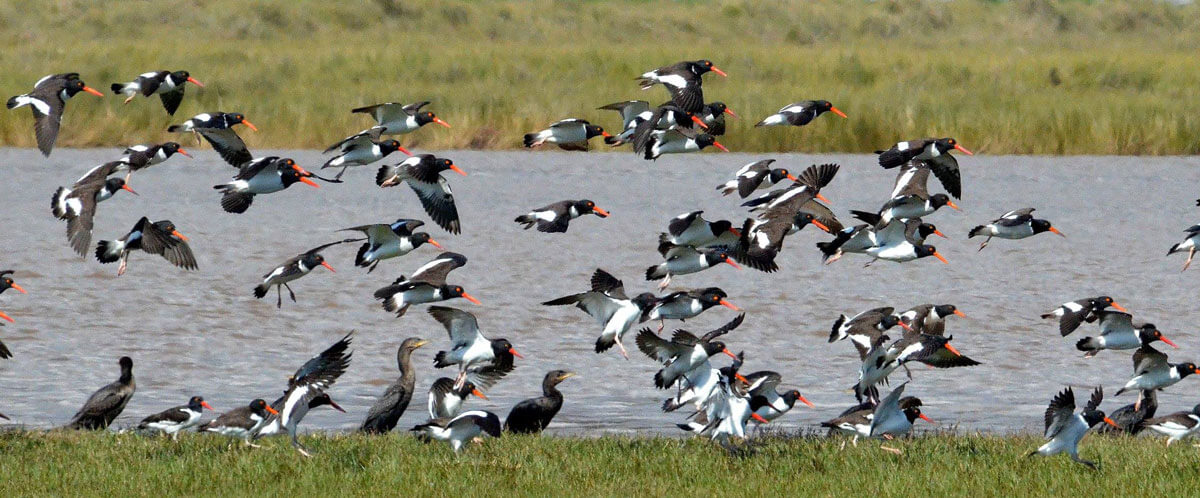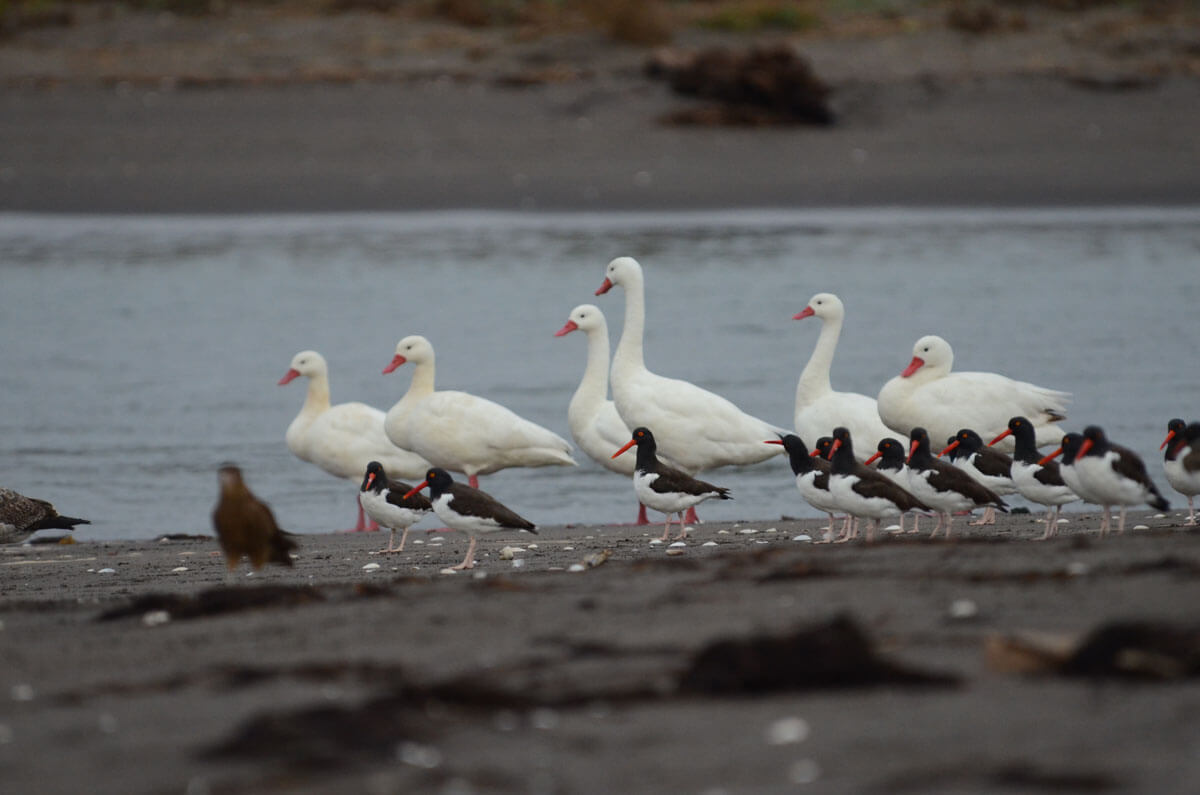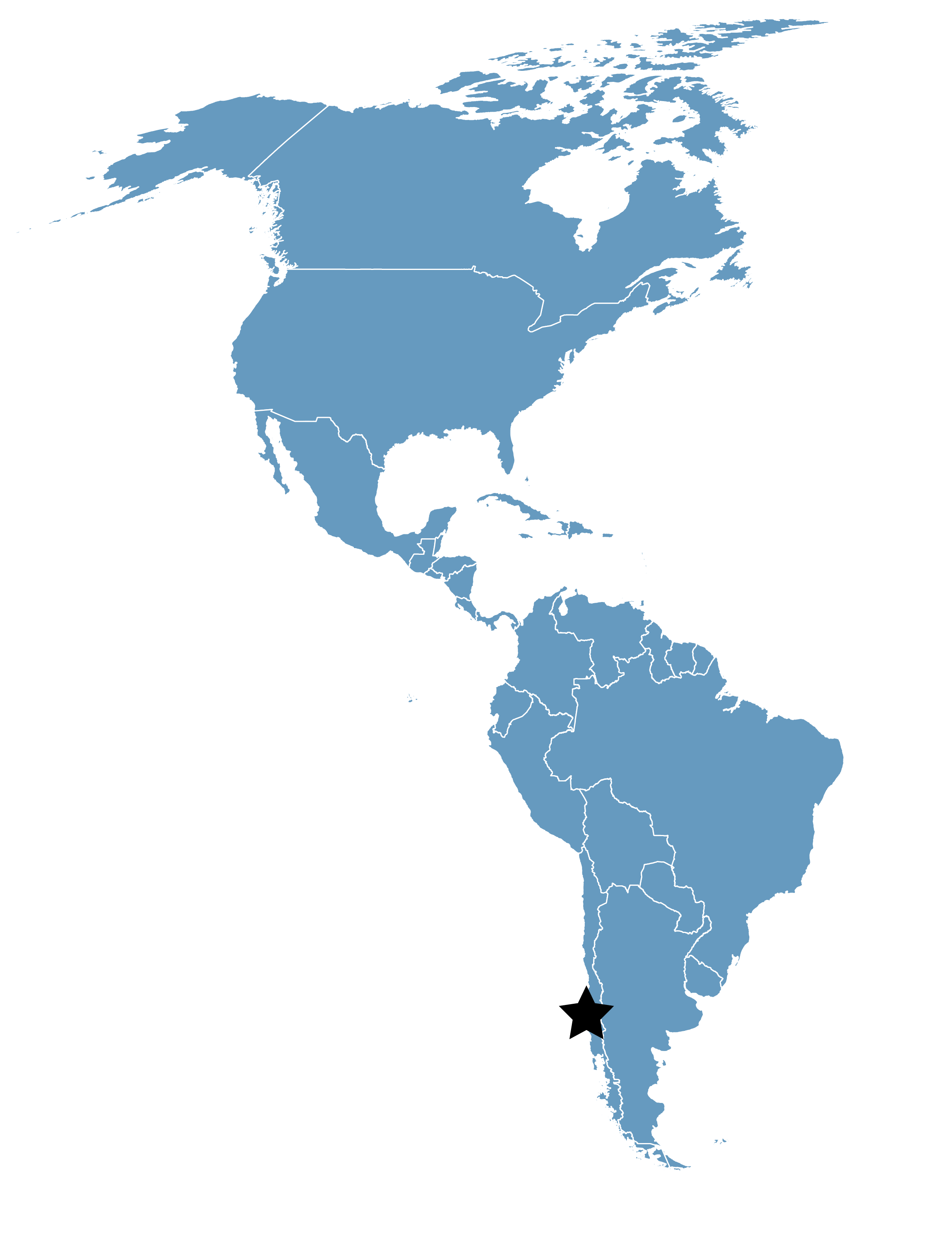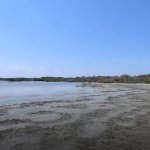Isla de los Reyes Rocuant Beach
Location
Bahía de Concepción, Biobío, Chile
Category
Regional
Basis for Designation
More than 1% of the biogeographical population of ‘pitanay’ American Oystercatcher (Haematopus palliatus pitanay), ‘hudsonicus‘ Whimbrel (Numenius phaeopus hudsonicus).
Size
52 ha (128.5 acres)
Date Designated
May 2023
Site Owner / Responsible Entity
Dirección General del Territorio Marítimo y de Marina Mercante
Gobernación Marítima de Talcahuano.
Site Partners
Fundación Bandada
Regional Secretariat of the Environment of the Biobío Region
Regional Secretariat of National Assets
Municipality of Talcahuano
ASMAR
NGO Aumén
Audubon Americas
GEF Coastal Wetlands Project.
Contact
Patricio Ortiz Soazo, Fundación Bandada
Overview
Isla de lo Reyes Rocuant Beach is located in the Bahía de Concepción between the municipalities of Talcahuano and Penco in the Biobío Region of Chile. It is a 10-kilometre long beach with an area of approximately 52 hectares, and is part of the Rocuant-Andalién, Vasco de Gama, Paicaví-Tucapel Bajo Wetland Conservation Priority Site (MMA, 2019) and the Rocuant-Andalién Marsh Wetland IBA (Important Bird and Biodiversity Area) site (P. Ortiz, 2009). The site consists of marine shores of pebbly sand, dunes, soft-bottom intertidal, and estuarine waters.
Isla de los Reyes Rocuant Beach regularly hosts >1% of the biogeographic population of ‘pitanay’ American Oystercatcher (Haematopus palliatus pitanay) during the breeding season and up to 5% in some non-breeding periods.

Photo by Patricio Ortiz
Isla de los Reyes Rocuant Beach regularly hosts >1% of the biogeographic population of ‘pitanay’ American Oystercatcher (Haematopus palliatus pitanay) during the breeding season and up to 5% in some non-breeding periods, representing one of the most important sites in Chile for this species’ breeding and resting grounds. In addition, the site regularly supports >1% of the biogeographic population of ‘hudsonicus’ Whimbrel (Numenius phaeopus hudsonicus).
The site also serves as an important area for other bird species such as Black Skimmer (Rynchops niger), Franklin’s Gull (Leucophaeus pipixcan), Elegant Tern (Thalasseus elegans), Coscoroba Swan (Coscoroba coscoroba), Dominican Gull (Larus dominicanus), Neotropic Cormorant (Phalacrocorax brasilianus) and Great Grebe (Podiceps major).
The vegetation typical of these environments is of the dune type. Plant species under this distinction are especially adapted to strong winds, lack of oxygen, and scarce accumulation of organic matter (Sanhueza et al., 2009). The dominant species in this area include Vachellia caven (Mol.) Mol. and Margyricarpus pinnatus Kuntze, Ambrosia chamissonis (Less.) Greene, Salsola kali L., and Nolana paradoxa Lindl.

Photo by Patricio Ortiz
Conservation actions and research initiatives
During the last few years, Fundación Bandada has been developing several actions aimed at the legal or administrative protection of the area and safeguarding the breeding colony of the American Oystercatcher at the site.
Together with Manomet, Fundación Bandada has worked with local volunteers to design and install signage and perimeter fences to balance recreational activity and the protection of the site. They have also organized environmental education and outreach programs, training community members to be good environmental stewards, as well as a monitoring program, partnering with academic institutions to ring breeding pairs and chicks of American Oystercatcher.
A working group for the conservation of the American Oystercatcher is currently in operation, made up of different public and private institutions that seek collective solutions to various problems in the area through access to information, communication, and coordination. This space for collaborative participation was conceived to implement concrete measures to ensure the reproductive success of the American Oystercatcher through community involvement, collaborative management of the beach, and mitigating threats to the site and the species it supports.
Threats to shorebirds
The site has experienced an increase in human activities in recent years, such as motor vehicle traffic, the presence of dogs, and recreational activities of all kinds, the most severe threats to the breeding success of American Oystercatcher and the resting and feeding of Nearctic and southern migratory birds. Other threats include oil, plastic, noise and light pollution, and the abandonment of both sport and commercial fishing gear.
Another factor that significantly threatens the reproductive success of American Oystercatcher is an increase in climate-driven storm surge events, affecting the nests of breeding pairs present at this site.









